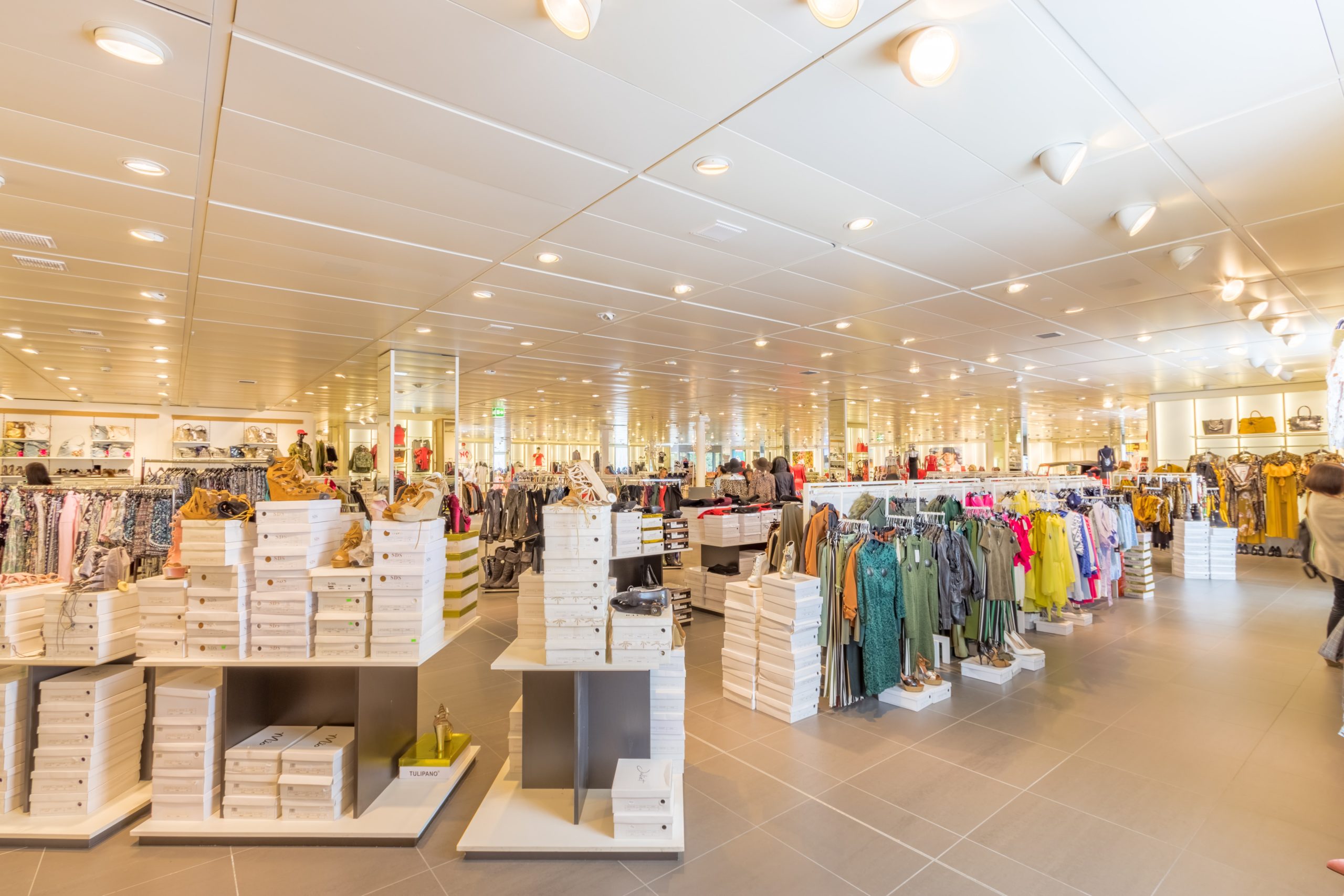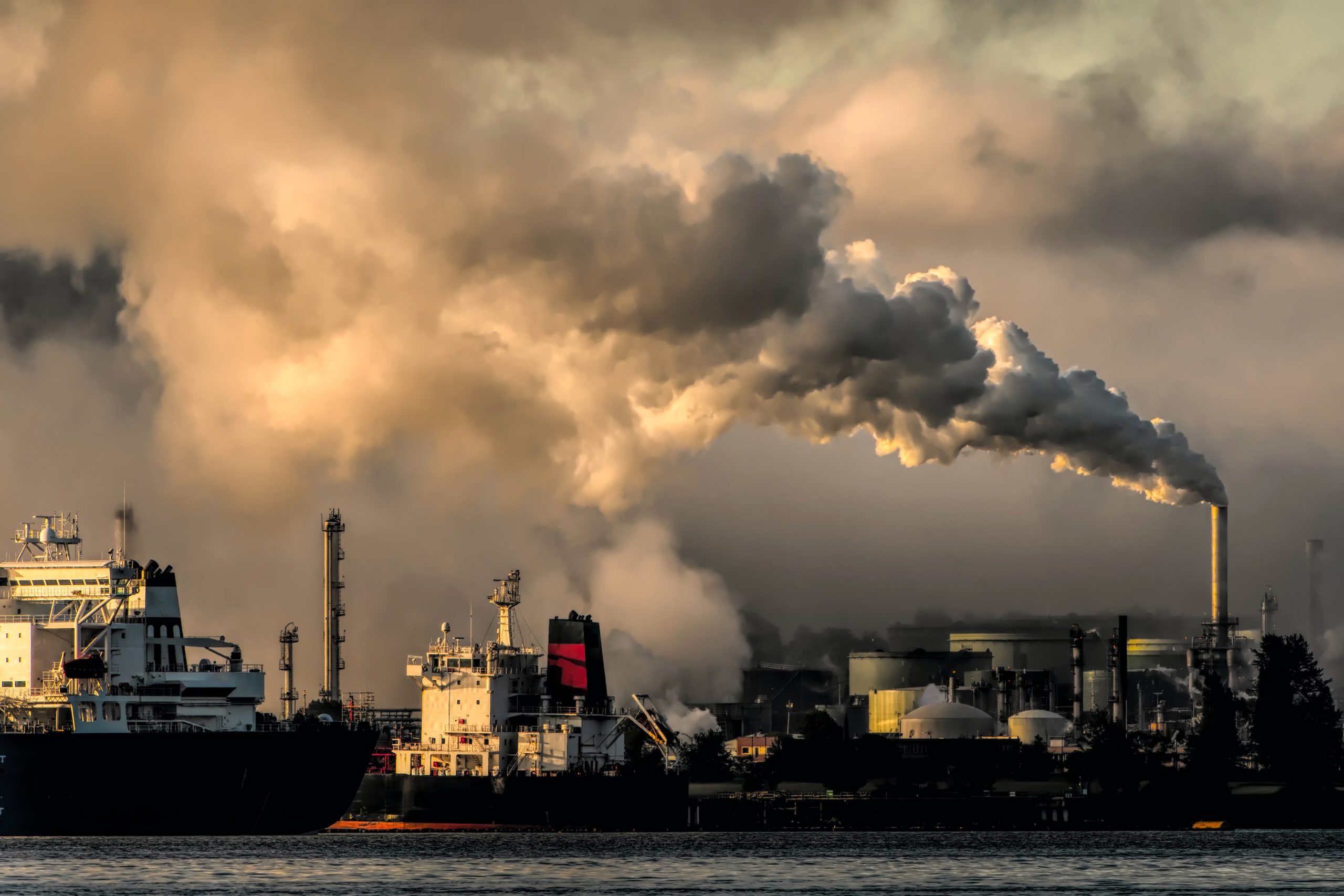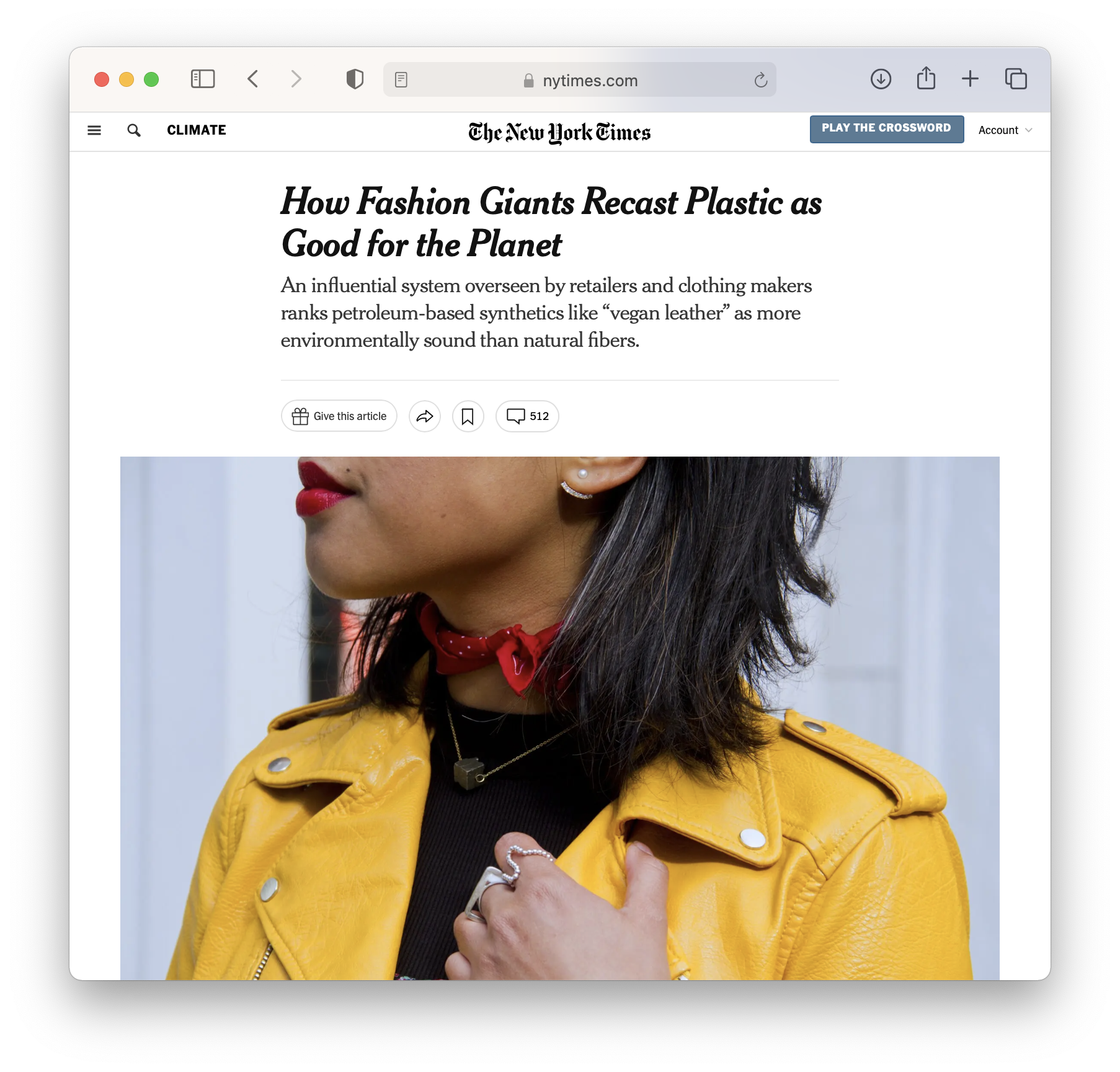The Higg Material Sustainability Index (Higg MSI), the fashion industry’s most utilized sustainability rating system, has suspended its consumer-facing reports. We’re here to tell you that this is actually good news for the world’s natural fiber systems.

There’s been quite a bit of negative press surrounding the fashion industry’s leading sustainability rating system, the Higg MSI. We’re here to tell you that this bad press is actually good news for soil regenerating agriculture and natural fiber systems.
Earlier this summer, the Norwegian Consumer Authority banned the use of the Higg Material Sustainability Index (MSI), ruling that Higg-backed marketing claims are considered inaccurate. This decision has massive ripple effects for the global fashion industry and the power to influence legislation in the European Union and the United States. In this article, we will break down what the Higg MSI is, explain why its claims are misleading, and share the story of how journalists, activists, and organizations successfully illuminated the core issues with the method of measurement that the index utilizes.
What is the Higg Material Sustainability Index?
The Higg MSI was introduced by the Sustainable Apparel Coalition, initiated as a high-profile project led by brands Patagonia and Walmart. The Higg MSI aims to measure a product’s sustainability across its life cycle. We’ll get into that data in just a minute, but one characteristic of the Higg MSI that is important to point out is that it is operated as a for-profit company. Its “pay to play” approach allows larger businesses to define “sustainability” utilizing datasets that are largely unavailable to the public and lack third-party oversight. The Higg MSI allows retailers to portray certain materials as more environmentally-friendly than others, and its measurement system particularly favors synthetic materials made from fossilized carbon over biosphere-based materials such as wool, silk, and leather. Next, let’s talk about how they are able to justify these claims.

Why is the Higg Material Sustainability Index Misleading?
There are several reasons why the data used by the Higg MSI provide a stunningly incomplete assessment of a material’s environmental and social impacts. One of the biggest faults of the Index is that the underlying data used to inform fiber scores are limited in scope, in many cases outdated, and based on studies that are not representative of an entire fiber production sector. These datasets are then applied broadly and expected to represent a fiber type that in reality, cannot actually be separated from its local ecological and social context.
The Higg MSI relies on what are known as life cycle assessments to determine fiber impact. But how the Higg MSI measures the life cycle of a product is incomplete. A true measure of a product’s life cycle would take into consideration the environmental, economic, and social costs of a good using a framework that accounts for the entire life cycle, including impacts at the end of the product’s life or when it is disposed of.
The Higg MSI falls short in a number of ways:
- It uses a “cradle-to-gate” approach, rather than “cradle-to-grave” or “soil-to-soil.” (see definitions below)
- It considers only environmental impact to measure sustainability, rather than looking at environmental, economic, and social costs of producing a good.
- It doesn’t apply apples-to-apples measures to score environmental costs; a result of the discrepancies in how fiber types are scored is that animal fiber products like wool, silk, and alpaca rate lower than the preferred materials of large apparel companies, like cotton and synthetics.
What’s Missing In A Cradle-To-Gate Framework?
Two important terms to understand in life cycle assessments are “cradle-to-gate” and “cradle-to-grave.” The Higg MSI utilizes what is called a “cradle-to-gate” approach. Cradle-to-gate refers to the impact of a product from the moment it’s produced to the moment it enters the store. A “cradle-to-grave” assessment appraises the environmental impact across a longer stretch of a product’s life (from raw material through processing, manufacture, use, and eventual disposal or recycling). Cradle-to-grave can provide a more accurate assessment of a material’s full environmental impacts. Even more comprehensive than this, Fibershed proposes a soil-to-soil framework that considers the ways our production models can build ecosystem and community health as the foundation for meeting our ongoing needs for these goods.
The cradle-to-gate methodology used by the Higg MSI leaves out some of the most devastating effects of the clothing lifecycle for synthetic textiles, like the impact of extraction and transport of fossil carbon and the release of microplastics into ecosystems. It also does not consider whether a good is renewable, repairable, or biodegradable. In this way, the methodology creates an inherent bias toward synthetic fiber types, omitting the most damaging aspects of those garments’ full life cycle and ignoring some of the most important benefits of natural fibers (such as requiring less washing, having more longevity of use, and being able to safely biodegrade after a long lifetime of use).
For an in-depth conversation about life cycle assessments and the data that informs the Higg MSI, we invite you to listen to episode 2 of our new podcast, Weaving Voices.
Sustainability Measurement Must Include Socioeconomic Outcomes
Additionally, despite the claim that the Higg MSI assesses “social performance,” there is no socioeconomic variable in the index. An apparel manufacturer or producer that pays a living wage scores the same as those that pay below subsistence wage. The impact of using a particular fiber source on supporting healthy livelihoods, community well-being, and worker safety is categorically not considered.

Incompatible Comparisons
Finally, the Higg MSI life cycle assessment uses different methodologies across fiber types, rendering the measurement framework arbitrary. Shifting boundaries for what falls into a methodology for one product and not for another produces results that are not comparable. While the Higg MSI continues to state that their measurement framework should not be used to make comparisons, the question for the Higg MSI is: ‘Why measure anything at all if you don’t want your users to compare those measurements against one another to make informed sustainability decisions?” Comparison is the natural default (and should be) for any effort to measure. Now back to the subject of arbitrary boundaries. Within Higg MSI data, water consumption is calculated for natural fibers (like silk) and synthetic fibers (like polyester) varies widely. For silk, the Higg MSI data on water use comes from a small study in India, in a region with particular challenges and water use patterns not found in other regions where silk production is concentrated, and applies those findings globally. For polyester, the Higg MSI barely registers water consumption and pollution within its metrics, although water consumption and methane & carbon dioxide emissions are intrinsic in the generation of fossil carbon based raw materials for polyester fiber production. These discrepancies, among others, have led the Higg MSI to suggest polyester is more sustainable than silk.
In summary, the metrics used by the Higg MSI lifecycle assessments generate disproportionate results for some materials. For a deeper understanding of how this plays out with specific materials, we suggest reading our series, Unpacking Sustainability in Fashion. Author and analyst Veronica Bates Kassatly breaks down how sustainability tools like the Higg MSI misrepresent economic and environmental impacts while ignoring the cultural importance of wool, silk, and alpaca production.
How the Higg MSI Was Discredited as Greenwashing
Over the past year, activists and organizations have called out the Higg MSI for being a brand-driven tool that misleads consumers via greenwashing. In the fall of 2021 and spring of 2022, Eco-Age published a groundbreaking two-part report called The Great Greenwashing Machine – Part I and Part II that details important flaws in the sustainable fashion industry. Earlier this year, Fibershed contracted London-based economic analyst Veronica Bates Kassatly to generate the three key articles mentioned above that focus on the impacts on silk, alpaca, and wool-producing communities as a consequence of the current definition of sustainability framed by the Higg MSI. These articles were widely shared and provided eye-opening accounts of the impacts being felt by farming communities due to the way that the Index is choosing to frame data.
The New York Times picked up the thread with an article that forced the Higg MSI’s creators into a public response in early June this year. The response claims that the Higg MSI does not favor synthetic materials over natural fibers and that the tool is not designed to compare materials. However, the blanket scores comparing fiber types are a key way that the MSI has been used by brands to promote their products. These scores provide a comparison between fiber materials that generalize their impacts rather than consider local or regional contexts that could be used to drive improvements in impact.
In late June, the Norwegian Consumer Agency (NCA) declared the use of Higg MSI data an inaccurate measure of sustainability. The NCA labeled the Higg MSI “greenwashing,” effectively ending its use on products sold in Norway. This groundbreaking step has the potential to influence upcoming legislations, including the European Union’s Product Environmental Footprint (PEF) methodology under the EU Green Deal.
The creators of the Higg MSI went into a full retreat by June 27 and paused their “consumer-facing transparency program.” This specifically means removing the published Higg Index seal and scorecard from participating online retail platforms.
Holding Brands Accountable in the United States
We’re starting to see this movement gain traction here in the United States. In late July, a class-action lawsuit was filed against H&M, accusing the brand of deceiving consumers about the accuracy of its sustainability claims through the use of “false and misleading” environmental scorecards and advertising. An investigation by Quartz showed that more than half of the H&M scorecards claimed that certain pieces of clothing with a “sustainability” label are better for the environment when compared to other garments made by the company. And in some cases, the data displayed were entirely wrong. The data being used to justify these figures are based on the Higg MSI.
In an article from the Sourcing Journal, Devon Rufo provided this analysis of Higg’s deceptive sustainability claims:
“‘[…] there’s a massive difference between using the best-available data to make directional product improvements around fiber choice, and using that data to position you product as ‘sustainable’ in an effort to drive increased consumption […] the fashion industry has a unique obsession with material-based sustainability claims and certifications, while often turning a blind eye to the full picture of a product’s supply chain.'”
This partial and misleading data is actually harmful because it prevents better decision-making by brands and consumers. We hope that this is only the beginning of textile brands being held accountable, developing better systems, and acknowledging the harms of both recycled and virgin polyester that are not captured in the current industry’s ‘sustainability’ rankings.

Building a Movement for Credibility in Labeling Claims
The collective efforts of actors across the globe and from every point on the value chain led to this key moment of accountability. We are grateful for the persistent and powerful work of groups and individuals committed to changing fashion for the better. Members of the #MakeTheLabelCount campaign, collectively and individually, have been leading a movement to ensure clothing sustainability claims in the EU are credible. They have sounded the alarm about the inaccuracies of the Higg MSI to ensure it is not enshrined in new EU policy, and continue to advocate for stronger policy at an international level.
The Union of Concerned Research in Fashion is a critical voice committed to holding brands accountable while growing the sustainable fashion knowledge base. Their Manifesto outlines a vision for sustainability in fashion that is grounded in empirical evidence and accounts for true environmental and social costs.
Consumption Research Norway (SIFO) provides invaluable research that aims to understand the role of consumption and consumers in society and supply the knowledge basis for public consumer policy in Norway. SIFO is a nonprofit, transdisciplinary research institute at the Centre for Welfare- and Labor Research (SVA) at Oslo Metropolitan University. SIFOs research continues to shed light on our wardrobes’ environmental and social impacts.
It’s worth mentioning again the decisive work of Veronica Bates-Kassatly, an independent analyst and the lead author of The Great Greenwashing Machine Part I and Part II, published by Eco-Age. Eco-Age helps brands to lower their impact on people and the planet while communicating their journey in a transparent, tangible way. Eco-Age’s creativity and innovation have poignantly captured critical issues in sustainable fashion.
Creating Systemic Change in the Fashion Industry
While we know this issue is far from resolved, it does come as a great reminder that our collective efforts are working. A small but growing network is paying attention, learning about the importance of good data, measurement, and methodologies, utilizing policy to shift systems, and demanding accountability. Your voice has never been more crucial. The more people who understand the importance of this work, the better equipped we are to create a just, sustainable fashion industry that regenerates the environment and supports local economies. We hope that this story reminds you to keep paying attention and to not lose hope because change is possible.
We invite you to share this article with a friend and to collectively start paying attention to other measurement tools that might be contributing to greenwashing. To stay in the loop about Fibershed’s work and add your voice to critical topics like this one, sign up for our newsletter.
